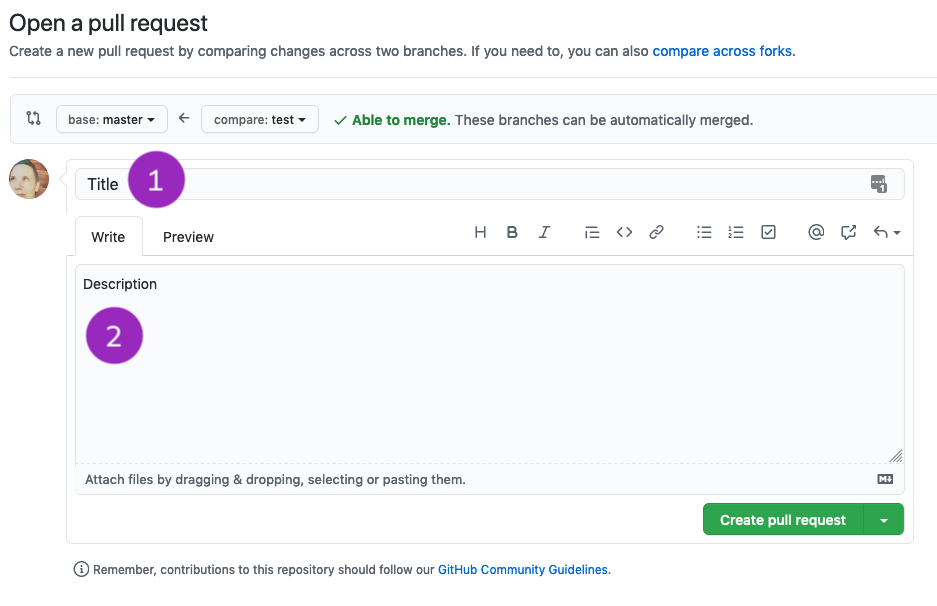how toPull Request
Introduction
A pull request (PR) on GitHub is a process of
- comparing the work on your branch against another branch (often the master branch)
- evaluating if the code can be merged into that branch
These two steps are handled entirely by automation provided by the combination of git and GitHub. No user intervention needed (thanks, helpful robots 🤖).
When everything is golden, GitHub will include a clear notification that your work can be merged.

However, a PR is also an opportunity for a discussion and review of the code that is being submitted. In this way, when you create a PR and share it with me, I can then see the changes you’ve made, file-by-file and line-by-line, and provide comments and suggestions about that code.
For this reason, your project PRs should never be merged until after you have received a grade.
Creating your pull request
Usually, after you push to GitHub a new branch with some changes, you will see a notification on your repo homepage.

If you do not see that option, you can use the branch select dropdown to switch to your branch and then select “Pull Request” to create your PR.

The PR form has two elements:
- A title: What is your summary description of these changes?
- A description: More detail about your project. I will provide you with prompts to aid the writing of your PR description.

{: .callout }
You may create a PR any time after you have pushed your first changes to your branch. The PR will update with all future commits to the branch and be an accurate portrayal of all your work on the branch, regardless of when the PR itself is created.
You can edit the PR form at any time by:
- using the Edit button to update the title
- using the menu icon (represented by three dots) and selecting Edit to update the PR description
